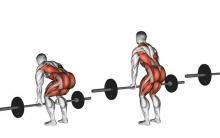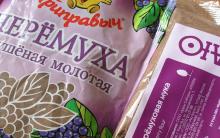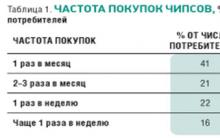The elevator shaft is equipped with embedded elements for the subsequent assembly of the structure located along the entire height of the building. In some cases, mortgages are not included in the design, then the blocks are mounted on expansion dowels. The use of tubing makes it possible to apply the in-line method of installing elevators in any type of construction.
Since the installation of elevator shaft blocks can be carried out in buildings in buildings with different ceiling heights, structures of different sizes are produced, as well as additional elements.
The task of reinforced concrete products is to ensure the safe comfortable movement of people inside the building, therefore, special attention is paid to the quality of materials, the accuracy of compliance with design requirements and professional installation. In order for the elevator cabins to move freely inside the shaft, the following parameters must be observed during the manufacture of reinforced concrete products:
Precise geometry;
- the absence of visible defects - cracks, shells;
- the absence of parts of the reinforcement that are not covered with a layer of concrete of the required thickness.
Features of elevator shafts
Products are designed taking into account the location of the elevator counterweight - behind or to the side of the elevator cabin. The main characteristics of reinforced concrete elevator shafts are:
High strength characteristics;
- wear resistance and durability - the service life of the shaft is several decades and is comparable to the service life of the main load-bearing structures of the building;
- fire resistance. Fire resistance limit - 1 hour or more;
- simple installation and high maintainability;
- resistance to moisture.
The installation of elevator shafts helps to strengthen the main structures of the building and increase its stability.
Elevator Shaft Marking
Like any concrete products of mass demand, the product is subject to mandatory labeling. Alphanumeric designations are applied to inner surface block located behind the elevator cabin.
Designations ShL stand for elevator shafts. The next letter characterizes the type of lift. L - passenger elevator; G - freight elevator.
The numbers after the letters indicate the dimensions of the block. Also, the marking may indicate the presence of additional structural elements and mortgages.
Delivery Lift shafts
Delivery of elevator shafts is carried out by our own transport in Moscow, Moscow, Oryol, Ryazan, Kaluga and other regions of Russia! Delivery calculation can be ordered in the Delivery section.
When delivering an elevator shaft, precautions must be observed. To transport heavy cargo according to GOST, it is allowed only in a horizontal position in special vehicles. When loading / unloading, it is forbidden to move several pieces. Exception: rigging special devices, where it is allowed to lift several products at the same time.
When stored for open ground a gasket with a thickness of at least 10 cm is placed at the base of the stack, a drain for water is required.
Lift shafts price in Moscow
Lift shafts price per piece. The price depends on their size, thickness, presence / absence of reinforcing additives, reinforcement. In order not to overpay for the goods, it is advisable to order elevator shafts directly from the manufacturer, PSK Perspektiva LLC. So you will receive certified reinforced concrete products with a laboratory conclusion and at the best cost.
Our company can offer you the best balance between quality and cost.
Our price list can be requested to place an order in the section of the site that interests you.
Come and see the prices and make sure that cooperation with us will be beneficial for you.
Our factory LLC PSK "Perspektiva" has been operating since October 2003.
Buy Elevator shafts at the reinforced concrete plant
It is profitable to buy elevator shafts without intermediaries at the Perspektiva reinforced concrete plant. New lift shafts are always available in our warehouses. Now we are increasing production capacity and looking for new reliable partners.
If you are serious about cooperation, please contact us by phone numbers listed in the "Contacts" tab.
Three-layer wall panels are used in the construction of multi-storey buildings residential buildings, cottages and industrial facilities.
They are manufactured in the factory from three plates, which are interconnected by a reinforcing cage.
Heat-saving material is placed in the free space. The release of such panels made it possible to speed up and optimize the construction process.
Consider the types of reinforced concrete slabs and their characteristics, advantages and disadvantages, regulatory requirements to production.
Panel Features
Depending on the design features reinforced concrete wall panels are divided into types:
| № | Kinds | Characteristics |
|---|---|---|
| 1 | Single layer | They are made of concrete on porous aggregates: foam concrete, aerated concrete, ash gravel. Expanded clay, slag, etc. serve as fillers. The outer side is covered with a facing layer 2-4 mm thick to protect the panel from moisture and other atmospheric influences. Inner part plaster. |
| 2 | Double layer | Produced from two layers: outer and insulating. On the inside of the plate, an insulating material is fixed, covered with cement mortar. Install the structure with the heat-saving side inward. |
| 3 | Three-layer | They are made in the form of a sandwich of two outer plates and a heater between them. They have enhanced properties to keep warm and not let in street noise. |
 Depending on their design features, the panels receive and distribute the loads that fall on them in different ways.
Depending on their design features, the panels receive and distribute the loads that fall on them in different ways. Depending on the resistance to stress, they are divided into:
| Type depending on load resistance | Characteristics | Manufacturing materials |
|---|---|---|
| Carriers | They accept and distribute loads from their mass, ceilings, finishing materials. | Blocks from small to large. Internal panels are made hollow, solid, often ribbed or with ribs located along the contour of the plate. |
| Self-supporting | They take loads of their weight and wind effects and transfer them to the frame part of the building. | Large panels. |
| Mounted | Withstand wind loads and their own gravity within one floor. | Multilayer lightweight energy efficient materials. Serve as a protective structure. |
Serves as a heater mineral wool, glass fiber and other fireproof materials.
The outer layer is made depending on the requirements for operational, protective, decorative properties.
It can be finished with concrete, tiles, natural stone, sprinkled decorative gravel or painted with facade paint.
For the installation of walls and in heated housing construction, multilayer wall panels are used, the design of which includes: outer protective-finishing, heat-saving and bearing layers.
wall panel requirements
 Wall panels undergo strict quality control and compliance with requirements
Wall panels undergo strict quality control and compliance with requirements Wall panels used in construction must comply with the requirements of regulatory documents:
- strict compliance with sizes and geometric shapes;
- high rates of heat saving and sound insulation;
- high strength, low specific gravity;
- fire resistance;
- high-quality reinforcement, all intersections of the reinforcement must be fastened together by welding;
- quality of docking connections;
- resistance to atmospheric and mechanical influences;
- economy.
High stability of reinforced concrete wall panels is ensured when they are connected to each other and to ceilings. Concrete concrete panels themselves are not sufficiently stable due to their shape: large length, width and small thickness.
disadvantages
The disadvantages of reinforced concrete slabs include the fact that due to heavy weight and dimensions, special equipment has to be involved in the transportation and installation of blocks.
How to distinguish high-quality concrete products
Without special equipment, the quality of the concrete used in the manufacture cannot be determined. But there are a few tricks on how to visually try to establish the quality of a wall panel. 
The brand of concrete can be determined by color:
 If defects and thin reinforcement are visible during external examination, then most likely the plate is of poor quality
If defects and thin reinforcement are visible during external examination, then most likely the plate is of poor quality The surface of the plate must be free of cracks, chips, and other defects. The reinforcement must not protrude from the concrete slab.
According to GOST, the hinges are made of metal with a thickness of more than 10 mm.
If you see that the loops are made of thin metal, we can assume that they also saved on internal reinforcement.
If during the inspection at least one of the described shortcomings was revealed, it is better not to buy such wall panels. Having saved on material, you will lose on the fact that the building will last much less and will need to perform frequent repairs.
Panel marking
 Each wall panel is marked, which allows you to find out its characteristics
Each wall panel is marked, which allows you to find out its characteristics Reinforced concrete products must be marked with letters and numbers written through a dash.
The first group of characters indicates the purpose and dimensions designs. An example of marking PST 700-350-25, where the length is 700 cm, the width is 350 cm, the thickness is 25 cm.
The last part of the marking indicates additional parameters:
- resistance to seismic ground vibrations greater than 7 points is denoted by the letter C;
- the possibility of operation at temperatures lower than 40 degrees, the letter M;
- permeability: normal - N, reduced - P, very low - O.
 The following parameters are also indicated in the marking:
The following parameters are also indicated in the marking:
- Shape, end face configuration.
- Location and dimensions of door and window openings.
- type and location.
- The presence and shape of strobes in the junctions of adjacent elements.
For construction, you need to purchase reinforced concrete slabs manufactured according to all the requirements of the standards. In this case, housing construction will be reliable and warm. Read more about three-layer installation reinforced concrete structures see in this video:
The most optimal option for energy efficient construction is the use of three-layer reinforced concrete panels.
Modern three-layer wall panels with PIR insulation, manufactured under the KROHN brand, are also intended for the construction of walls at various facilities. Due to the presence of high-quality insulation inside the panel, this building material has excellent thermal insulation characteristics. But no less important advantage is the ease of assembling an object from sandwich panels.
Three-layer wall panels with PIR insulation

The KRON group of companies sells PIR wall sandwich panels in Moscow. They can be of different thickness (from 30 to 220 mm), have different type profile (beading, stripes, microprofiling, without ribs) and any color according to the RAL scale.
To ensure perfect butt joints during the installation of three-layer wall panels with insulation, a reliable tongue-and-groove lock or a double-thorn-groove labyrinth connection is used during the production process. Due to this, the stability of the structure increases and the possibility of the formation of "cold bridges" is excluded.
Benefits of sandwich panel construction
Technical characteristics of KROHN PIR sandwich panels:
Due to the variety of requirements that exterior wall panels must meet, designing them is quite a challenge. Apart from general requirements imposed on the outer walls (strength, stability, low thermal conductivity, frost resistance, fire resistance, light weight, economy), the manufacture and installation of the structure of external wall panels should be carried out with a minimum of labor costs; they must have perfect joint designs and a high degree of factory readiness. The shape and finish of the panels must meet the aesthetic requirements for buildings in the construction area.
Optimal Constructive decisions panels are difficult to find also because they are constantly being modified and improved. Currently, many options for wall panels have been developed. Below is a description of the most used of them and promising ones. On fig. 14, a shows a load-bearing single-layer wall panel of a frameless house, made of expanded clay concrete grade 75 with a bulk weight of 900 -1100 kg / m. Panel thickness 340 mm. The outer surface of the panel has a textured layer 20 mm thick of decorative concrete, and the inner one has a finishing layer 10 mm thick from a mortar placed in the mold when the panel is concreted. After mounting the panel, it remains to putty and paint its inner surface.

Ras. 14. Single layer wall panels:
a - construction of expanded clay concrete panel; b - interface of the outer panel with the inner; ; c - the same, internal to each other; 1 - lifting loop; 2- temperature seam; 3 - decorative concrete; 4 - affective insulation; 5 - heating panel; 6 - embedded steel parts; 7 - steel connecting rods; 8 - panel outer wall; 9 - the same, internal; 10 - finishing layer; g - from cellular concrete; 1 - reinforcing mesh; 2- lifting loops; 3 - welded frames; 4 - grooves for installing brackets for window boards
On fig. 14, b, c shows the pairing and fastening of expanded clay concrete panel walls- external and internal and internal among themselves. The panels are fastened together by welding steel rods or strips to the embedded steel parts of the panels of the outer and internal walls. After welding, the fasteners are sealed with a solution of concrete to protect them from corrosion and from exposure to fire in case of fire. Single-layer wall panels made of autoclaved reinforced concrete have a small volumetric weight.
AT standard project residential large-panel houses of the 1-468 series provides for the use of wall panels per room, made of cellular concrete with a bulk weight of 600-700 kg / m3. The thickness of the panels, depending on the climatic region, is taken from 30 to 320 mm (Fig. 14, h). The end walls of the houses of this series consist of two walls: the internal load-bearing wall is designed on reinforced concrete, and the external self-supporting wall is made of cellular concrete.
Wall panels made of cellular concrete in the first houses built had a textured layer of dense mortar 30-35 mm thick on the outside. Since this layer makes it difficult for water vapor to escape from the room and complicates the technology for manufacturing panels, now in the panels of houses of the 1-468 series, instead of a textured layer, a hydrophobic coloring of the outer surface of the panels is produced, which allows water vapor to pass through and at the same time protects the outer surface from atmospheric moisture.

Rice. 15. An example of the construction of a two-layer lightweight concrete wall panel:
I - frames; 2 - carrier layer; 3 - finishing layer; 4 - window sill; 5 - drain; 6 - lifting loops; 7 - large-pore (heat-insulating) concrete; 8 - embedded parts; 9 - embedded parts for mounting the radiator
Single-layer wall panels can be considered the most promising: in comparison with layered panels, they have many advantages due to the simplicity of the design solution and technology manufacturing, lower labor costs; in addition, production W.H can be easily mechanized.
In the absence of an aggregate suitable for producing lightweight concrete with a bulk weight of less than 1000 kg / m 3, it is powerful to use two-layer panels, the bearing layer of which consists of dense light or heavy concrete of grade 150-200 with a volumetric load of more than 1000 kg / m3, and the insulating layer is made of heat-insulating light or cellular concrete or rigid thermal insulation boards . The thickness of the bearing layer for wall panels must be at least 60 mm.
The carrier layer is recommended to be placed with inside premises, so that it would certainly be a vapor barrier. The heat-insulating layer is protected from the outside with a layer of decorative concrete or mortar grade 50-75 with a thickness of 15-20 mm. In the case of the use of insulation in the form of semi-rigid heat-insulating slabs or reinforced concrete load-bearing slabs of two-layer panels laid by pouring, they are designed with ribs along the contour or often ribbed. The height of the vertical ribs is set within 1/20 -1/15 of the panel height, the plate thickness between the ribs is at least 35 mm.
The width of reinforced concrete ribs is taken to be at least 40 mm, and in load-bearing panels, the width of horizontal ribs should be taken as 60 mm. On fig. 15 shows the construction of a two-layer lightweight concrete exterior wall panel. Three-layer wall panels consist of and; two reinforced concrete slabs and a layer of insulation between them (Fig. 16). As a heater, semi-rigid mineral wool boards, mineral cork, cement fiberboard, asbestos-cement boards, mineral wool mats on a phenolic bond, fiberglass mats, as well as rigid heaters - foam glass, ceramic foam, foam silicate are used.

Rice. 106. Three-layer wall panel:
1 - welded frames covered with concrete; 2 - lifting parts; 3 - heavy beta; 4 - insulation; 5 - welded meshes; c - overhead parts
The outer and inner reinforced concrete slabs are interconnected by welded reinforcing cages, previously concreted with light or heavy concrete. Until now, it has been assumed that the use of lightweight concrete should exclude the formation of heat-conducting inclusions that cause condensation. However, the practice of using three-layer panels with connecting ribs coated with light concrete showed that in winter time in the zone negative temperatures the reinforcing bars of the ribs are moistened and corroded.
It is recommended to make the inner plate of a three-layer panel 80 mm thick instead of the frame used 40-50 mm thick. In this case, the thickened heat-conducting reinforced concrete slab becomes, as it were, a heat pump that pumps heat from the heated room into the panel. As a result, the dew point moves towards the outer part of the panel, and the connecting ribs always end up in the zone of positive temperatures, which eliminates the possibility of their corrosion when concreting with heavy rather than light concrete.
The thickness - of the outer plate of the three-layer panel must be at least 50 mm. The thickness of the insulation layer is determined by heat engineering calculation. If we take cement fiberboard as a heater, then its thickness for Moscow will be 450 mm and the total thickness of the three-layer wall panel will be 80 + 150 + 50 = 280 mm. The thickness of the lined connecting ribs of the panel is not less than 40 mm, and the distance between them is not more than 1200 mm.
In foreign construction, the connecting links between the outer and inner plates of three-layer panels began to be made of stainless steel, which is very expedient from the point of view of the durability of the structure.
In construction practice, one- and three-layer external wall panels are most common, while the use of two-layer panels is very limited.
Bearing panels of the internal walls of large-panel buildings They are made of fire-resistant materials: heavy and lightweight concrete (slag coconcrete, expanded clay concrete, thermosite concrete, etc.); cellular and silicate concretes can also be used.
By design, the bearing panels of the internal walls can be solid (Fig. 17, i), hollow (Fig. 17, b), often ribbed (Fig. 17, c) and with ribs along the contour (Fig. 17, d, 9) . Among the progressive enclosing structures of the walls are panels made of asbestos-cement, as well as polymer materials. The advantage of these panels compared to reinforced concrete is their lightness.
Asbestos-cement wall panels can have frame and frameless structures. The frame wall panel (Fig. 18, a) consists of two asbestos-cement sheets: the outer one is 10 mm thick, the inner frame between them is made of asbestos-cement bars of a special profile (Fig. 18, b).
The frame of asbestos-cement panels can also be mounted from wooden bars. Insulation is laid inside the panel. Facing asbestos-cement sheets are attached to the frame on a durable waterproof polymer adhesive.
An asbestos-cement panel the size of a room has a frame along its contour and along the perimeter of the window opening, and the horizontal window bars of the frame are installed over the entire width of the panel. To increase the mechanical strength of the bars, they are reinforced with a strip of durable sheet asbestos-cement.
To enhance the thermal insulation of the panel, mineral wool felt on a bundle (Fig. 18, b, c) or insulating wood-fiber boards with a thickness of 12.5 mm are laid in its cavity in 2-3 layers with air interlayers (Fig. 18, d, e).
To prevent the felt from settling, the first layer is glued to the asbestos-cement sheathing with a vapor barrier coating, for example, iron minium on slate drying oil, and several anti-settling strips are laid (after 400 -500 mm), pressing the bulk of the insulation. Sedimentation strips are located either on one outer side (Fig. 18.6), or on both sides (Fig. 18, c). In the latter case, due to the wavy shape, the insulation is less susceptible to precipitation.
If the panels are insulated with fiberboards, the latter are laid in two layers with three air layers (Fig. 18, d) or in three with two layers (Fig. 18.5).
The frameless panel consists of an external asbestos-cement diet 10 mm thick, which is box-shaped, in a second flat asbestos-cement sheet, also 10 mm thick, forming the inner surface of the panel. A heater (mineral wool boards) is laid between the sheets.

Rice. 17. Bearing panels of internal walls:
a - solid single-layer; b - multi-hollow; c - often ribbed; g - with ribs along the contour; d - supporting the ceilings on the lower edge of the wall; 1 - welded frames; 2 - lifting loops; 3 - embedded parts; 4 - welded meshes; 5 - wooden plugs for fixing the plinth; in - the same, for fixing the box; 7 - round or oval voids; 8 - soundproofing gasket made of fibreboard
Panel thickness 140 mm, weight 1 m* about 70 kg. The mass of a frame panel 140 mm thick with a frame made of asbestos-cement bars and mineral wool insulation reaches 80. Frameless fabric also includes three-layer panel, for example, of the "sandwich" type of three layers of fiberboard, glued together with cement mortar and lined on both sides with flat asbestos-cement sheets.
When using asbestos-cement panels, it must be taken into account that asbestos-cement sheets in panels warp when they are moistened and dried on one side. To reduce water absorption and warping of sheets, it is recommended to cover them with hydrophobic liquid GKZH-10 or GKZH-11 (letters GKZH mean "hydrophobic silicone liquid"). GKZH-10 is an aqueous solution of sodium ethyl siliconate, GKZH-11 is an aqueous solution of sodium methyl siliconate.

Rice. 18. Asbestos-cement foot panels with asbestos-cement frame:
a - general form panels; b - design of panel drowning with mineral wool felt with anti-settling strips on one side; c - the same, from both sides; g - insulation with wood-fiber boards in two layers; 6 - the same, in three layers; 1 - frame elements; 3 - asbestos-cement sheets; 3 - mineral wool felt; 4 - anti-settlement strips; 5 - fiberboards; 6 - laying of fibreboard.
The question of the use of plastics for wall panels is still little studied, and such panels are used only on an experimental basis. When designing wall panels and other structures made of plastics, it must be taken into account that many polymeric materials are combustible, and the decomposition products formed during their combustion are toxic. Polyvinyl chloride foam, which belongs to slow-burning materials, as well as materials made using urea-formaldehyde polymers, are safer in terms of fire.
On fig. nineteen, a shows the design of a wall panel made of polymeric materials, which was used in a residential building built in Moscow on 4th Vyatsky Lane. The panel has the following layers, counting from the inner to the outer surface: gypsum dry plaster 10 mm, aluminum foil 0.1 mm, hard wood fiber board 4 mm. Next, a heater is laid - plywood honeycombs with foam plastic with adhesive bond 80 mm, fibreboard 4 mm. The outer lining consists of two layers of burlap and a layer of fiberglass impregnated with a polyurethane binder. Window frames and bindings are made of aluminum alloys.

Rice. 19. Wall panels made of polymeric materials:
a - with aluminum alloy window frames; 1 - dry plaster; 2 - solid fibreboard; 3 - insulation; 4 - fiberboard; 5 - burlap and fiberglass; 6 - aluminum window frame; 7 - sealing gasket for rubber; b - with plastic window casings: 1 - outer layer of fiberglass 5 mm thick; gas - insulation layers; 4 - element of a window stopper; 9 - elastic gasket al polyurethane foam; b - decorative inserts made of colored fiberglass (solution option).
On fig. nineteen, b another version of the plastic wall panel used in Moscow in an experimental house in the 10th quarter of Novye Cherepushek is shown. This panel is three-layer: the outer layer is made of fiberglass with a thickness of 5 mm, insulation layer - from polyvinyl chloride foam boards with a thickness of 103 mm and internal - from wood-particle boards with a thickness of 12 mm. Window frames and bindings are made of glass-vlastik (see Fig. 174). The panels are bolted to the transverse reinforced concrete beams-walls.

Rice. 20. Pairing a balcony slab with a wall:
a - incision; b - facade; c - plan; 1 - wall panel; 2 - balcony slab; 3 - steel; planks; 4 - insulation; 5 - cutout in the panel for the balcony slab.
The design of the fastening of balcony slabs in panel buildings is more complicated than in brick buildings due to the insignificant thickness of the panel walls. On fig. 20 shows the conjugation of a balcony slab with a panel wall of two-layer panels with an external reinforced concrete slab. The cantilevered balcony slab is between the wall panels and fastened to steel connecting strips welded to the embedded parts of the wall and ceiling panels.
KROHN three-layer exterior wall panels are modern material, which is widely in demand in Moscow and other regions of Russia both in capital construction and in the reconstruction of buildings.
Thanks to the use of these sandwich panels, an energy-efficient wall structure with a high-quality factory-made load-bearing element is obtained. This material does not require additional finishing, so it can be used for construction different types premises.
When is it justified to use three-layer exterior wall panels?

Since the installation of three-layer external wall panels is very fast, this material can be used for the construction of small buildings in the private sector. Today, garages for personal cars, utility blocks, building envelopes, etc. are built from KROHN panels.
The technical characteristics of sandwich panels allow them to be used for the construction of car washes, hangars, warehouses, supermarkets. Wherein main feature of this process will be high efficiency of work, practicality of finished walls (easy to clean, do not require painting, etc.) and reliable thermal insulation.
Construction with KROHN soundproof sandwich panels
The expansion of highway infrastructure places special demands on civil engineering. The materials used must provide high-quality sound insulation of the premises. The KROHN three-layer panel easily copes with this task. Walls built from our "sandwiches" effectively suppress noise (isolation index from 35 dB per 50 mm panel).
Taking into account all the operational (heat and sound insulation) indicators of the material, today it is used to build refrigeration and freezing chambers, facilities Food Industry, public catering, agricultural buildings, office buildings, etc. Thanks to three-layer external wall panels, energy consumption is drastically reduced at facilities and, as a result, heating costs are falling.
Technical characteristics of KROHN PIR sandwich panels:











Mars space program
The history of the origin of zero What is the name of zero
Gloria planet (anti-earth) - exposing all revelations Is it true that there is a planet behind the sun
20 cases of alleged reincarnation
The secret of the "sun stones": how the Vikings got from Norway to Greenland almost blindly